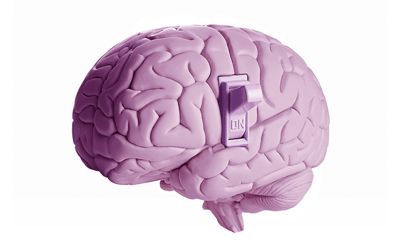Scientists explain how glutamate signals are distributed via synapses to turn on synaptic plasticity, the capacity of synapses to enhance or degrade over time in response to increases or decreases in operation.
The most potent drug for synaptic connectivity in the human brain is glutamate. It is by far the most abundant and active in all sorts of activities. Among the most striking is the gradual reconstruction of neural networks due to learning and memory acquisition, a phenomenon termed synaptic plasticity. Glutamate is also of deep therapeutic interest: following a stroke or brain injury and neurodegenerative disease, glutamate can accumulate to toxic levels outside of the neurons and may damage or kill them.
Glutamate is first released near the AMPA-type glutamate receptors, then released near the NMDA-type receptors immediately after the first signal to activate the switch for synaptic plasticity.
Shigeki Watanabe from Johns Hopkins University School of Medicine, a familiar face at the Marine Biological Laboratory (MBL) as a faculty member and researcher, is hot on the trail of explaining how glutamate signaling functions in the brain to facilitate neuronal communication. In a paper last fall, Watanabe (along with several MBL Neurobiology students) explained how glutamate is emitted from neuronal synapses after neuron burns. And today, Watanabe has released a follow-up report in Nature Communications.

Shigeki Watanabe and colleagues explain how glutamate signals are transferred via synapses to turn on synaptic plasticity, the capacity of synapses to enhance or degrade over time in response to increases or decreases in operation. “With this paper, we uncover how signals are transmitted across synapses to turn on the switch for plasticity,” Watanabe says. “We demonstrate that glutamate is first released near AMPA-type glutamate receptors, to relay the signal from one neuron to the next, and then near NMDA-type receptors immediately after the first signal to activate the switch for synaptic plasticity.”
Mechanically, the release of glutamate contributes to full membrane depolarization through AMPA receptors, which decreases pore-blocking magnesium, leading to greater NMDA receptor activation. Together, these findings indicate that release sites are likely to be coordinated to effectively activate NMDA receptors.
This new research was also partially undertaken in the course of MBL Neurobiology, where Watanabe is a faculty member. “It began in 2018 with (course students) Raul Ramos and Hanieh Falahati, and then we followed up in 2019 with Stephen Alexander Lee and Christine Prater. Shuo Li, the first author, was my teaching assistant for the Neurobiology course for both years,” Watanabe says. He’s coming back to the MBL this summer to lecture in the course—and learn more.













